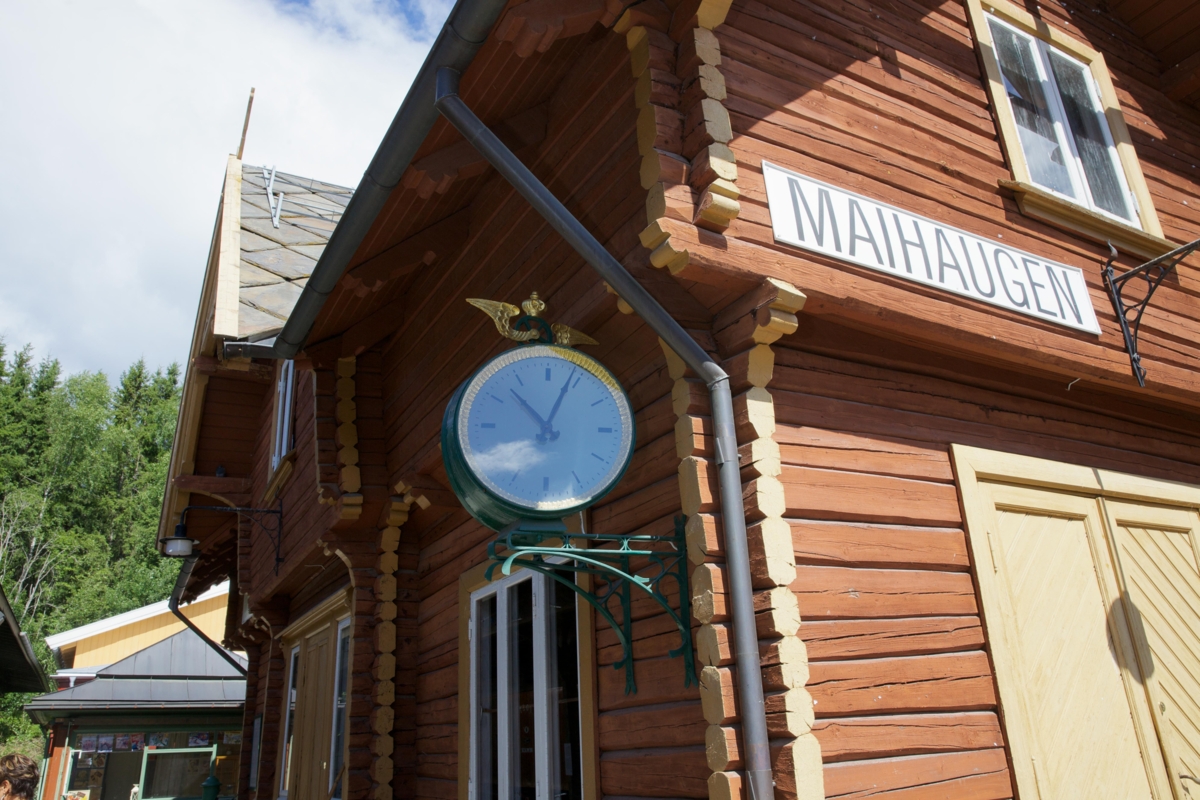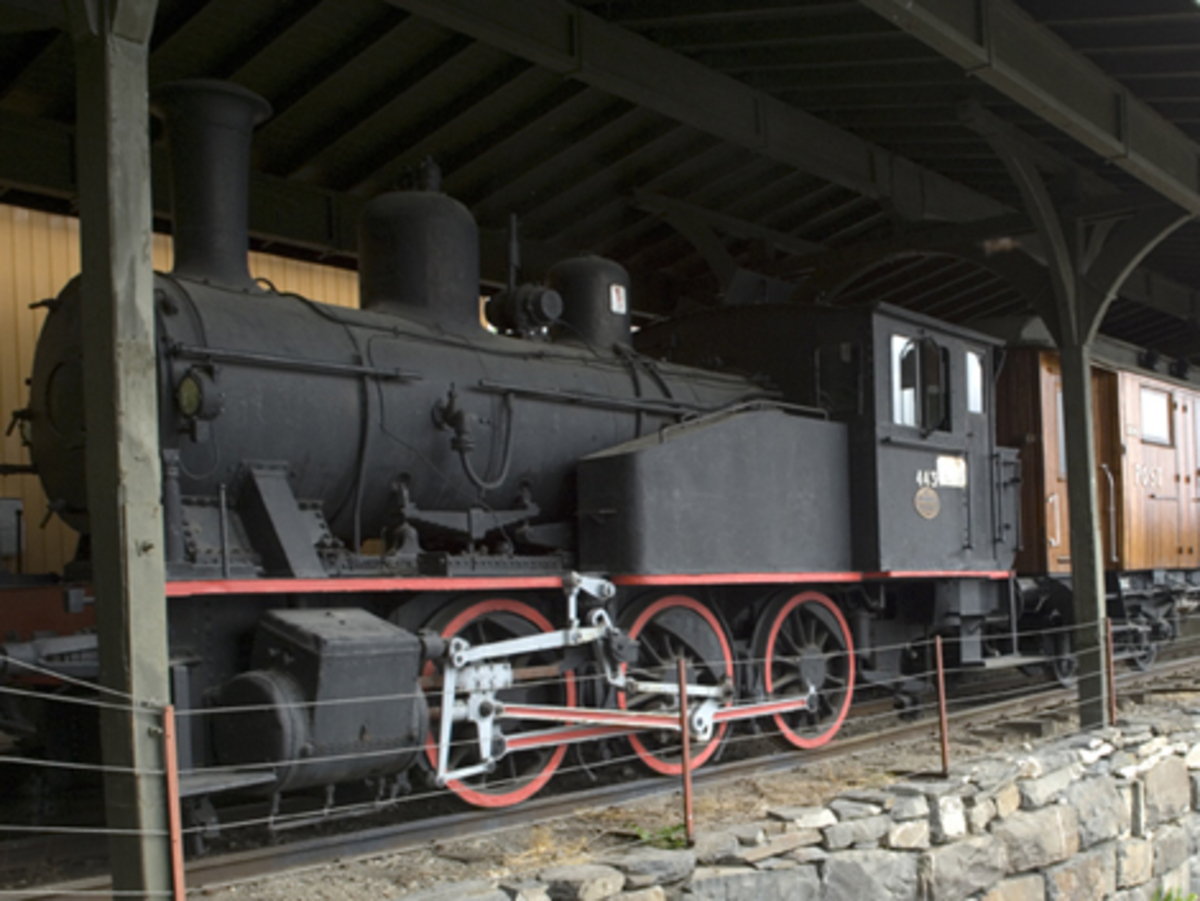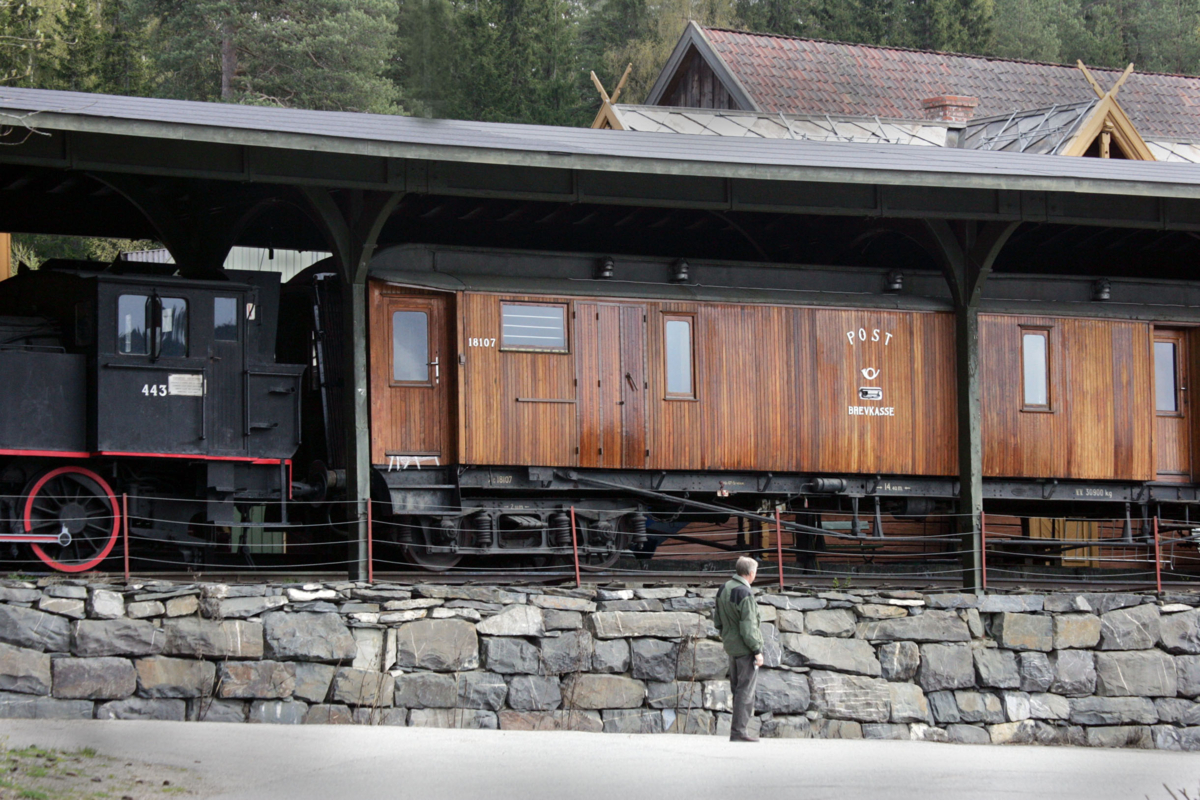
Photo: Ian Brodie/Maihaugen
The train and the Maihaugen railway station
Mail on rails and historic train sets
At the railway station in the Town area of Maihaugen, you can explore the exhibition "Mail on Rails." Visitors can step inside the mail carriage from 1922 and see how a major railway mail operation functioned during that era. The exhibition highlights the efficient way the postal service utilized the railway to transport letters and parcels across Norway.
The mail carriage at Maihaugen once operated as a night train on the Dovre Line. The train set also includes a locomotive from 1924, a compartment carriage with five compartments from 1921, a freight wagon from 1926, and a gravel wagon from 1912, all produced in Norway. The steam engine in the locomotive had a power output of 390 horsepower and a top speed of 40 km/h. It was fueled with coal, producing thick black smoke from the chimney during operation.
The station building at Maihaugen is originally the goods shed from Brøttum station, located a few miles south of Lillehammer, built in 1894. The platform canopy, which provides shelter for waiting passengers, was first erected in Christiania (now Oslo) in 1897, then moved to Lillestrøm station, and finally to Maihaugen in 1997.







